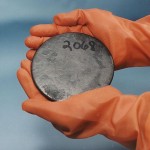Uranium-powered vehicles may become reality
A new type of uranium molecule called a uranium nitride that can someday power vehicles has been produced by researchers at the Los Alamos National Laboratory.
The new fuel could extract more power from fossil fuels and make vehicles more efficient. Uranium could also be used in making cheaper medications.
“Actinide nitrides are candidate nuclear fuels of the future,” said Jacqueline Kiplinger, the lead scientist at the Los Alamos National Laboratory study which is published on the latest issue of the journal Nature Chemistry.
“But they can also break carbon-hydrogen bonds, which are very strong,” Kiplinger added.
The new molecule strips hydrogen atoms from carbon, a similar process that occurs in today’s car engines.
Currently, much energy from the split dissipates as heat, but uranium nitride can minimize the energy lost and therefore allow gasoline to be used more efficiently.
But the research has a long way to go before commercial production, as the new molecule is destroyed when it separates hydrogen and carbon. Scientists would have to find a way to let uranium nitride survive the process and turn it into a catalyst instead.
Scientist Trevor Hayton of the University of California, Santa Barbara, who was not part of the research team, said that, “For me the most interesting aspect of this new molecule is its chemistry. But one motivation to create this new molecule is its proposed use as a new nuclear fuel.”
The new molecule can make smaller and cheaper nuclear power plants possible. NASA is interested in the future use of this substance for its projects.
Uranium nitride uses depleted uranium, which is considered less harmless than regular uranium, and has myriad potential applications.
